Banana and Pumpkin Loaf Cake Recipe
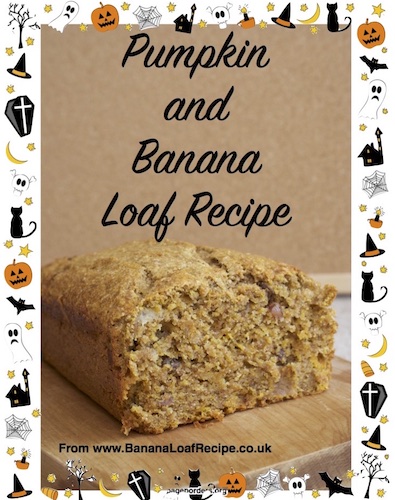
You say pumpkins to most people and their first thought is Halloween. Starting in Ireland, several hundred years ago, people carved faces into turnips to ward off evil spirits. How strange, then, that nowadays we use a carved pumpkin on our doorstep to attract rather than ward off passing children dressed as ghouls and witches!
From being something fairly unusal in the UK (my mum has still never tasted pumpkin, she says), pumpkins have become much more commonplace in the UK. Huge boxes of them go on sale in late October, mostly for the Halloween market, yet they also grow really well here and are becoming popular vegetables on the allotment. We grow them on ours and the bright orange colour cheers up the plot as the rest of the annual plants start to wither back.
However, as food waste is becoming a hot topic, we are beginning to realise that, as a nation we discard tons and tons of perfectly edible pumpkin flesh every Halloween. For many people, the pumpkin's sole purpose is to be a Jack O'Lantern and there is no thought to the meals the scooped out innards could provide. Yet, the pumpkin provides delicious and nutritious food as well as entertainment. Even more versatile than the butternut squash of which we are all so fond, it can bulk out your bolognaise, pad out your pie fillings, mingle with your meatloaf, or sweeten your sauces as well as starring in its own right in your cakes, muffins, puddings and soups. Its seeds are delicious if you roast them. It loves to be stuffed, steamed, roasted, boiled, or mashed.
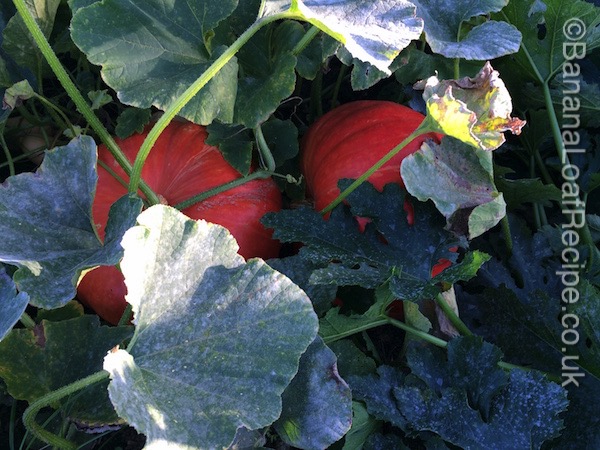
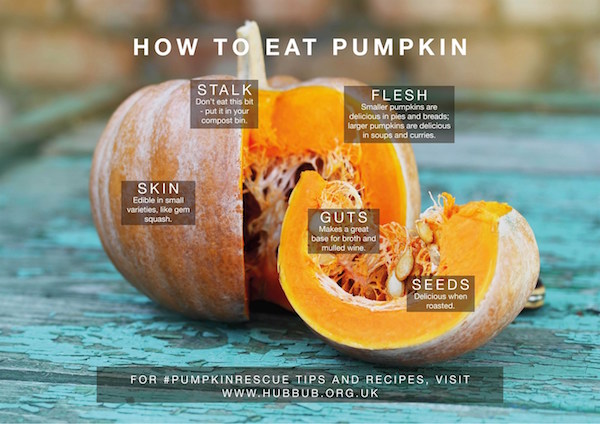
Nationally, awareness is growing of the amount of edible pumpkin that is discarded every year. The social enterprise and charity, Hubbub (http://www.hubbub.org.uk) have been running their Pumpkin Rescue campaign for three years now, raising awareness of culinary delights of pumpkins previously only carved as faces. Their Pumpkin Rescue website has facts and statistics, great recipes and inspires local groups to run their own Pumpkin Rescue event.
Here is our very own pumpkin rescue recipe - a delicious Banana and Pumpkin Loaf Cake recipe....
Banana and Pumpkin Loaf Cake
A lightly spiced and warming Banana and Pumpkin Loaf Cake recipe for Autumn days and Halloween.
Gives: 8-10 slices
Timings
Prep Time:
Cook time:
Total time:
Ingredients
8oz/225g wholemeal plain flour
4tsp baking powder
4oz/110g brown sugar
1tsp ground cinnamon
½ tsp ground nutmeg (freshly ground if possible)
pinch ground cloves
4oz/110g butter
8oz/225g bananas, mashed with a fork (approx 2 small; weight is with skin)
8oz/225g pumpkin puree- our homemade pumpkin puree recipe is below.
2 eggs, beaten
4oz/110g raisins
Equipment
A 2lb loaf tin (approx 23cm x 13cm x 7cm) or 2 x 1lb loaf tins
Method
1. Turn your oven on to 160 degrees C, Fan 150 degrees C, gas mark 4 or 350 degrees F.
2. Make sure your loaf tin is lined. We would recommend geting loaf tin liners, as they make life a lot easier (please read our loaf tin liners review). Alternatively, you can use greaseproof paper or baking parchment and cut it to fit the tin.
3. Make your pumpkin puree if you are going for a home-made version - our homemade pumpkin puree recipe is below.
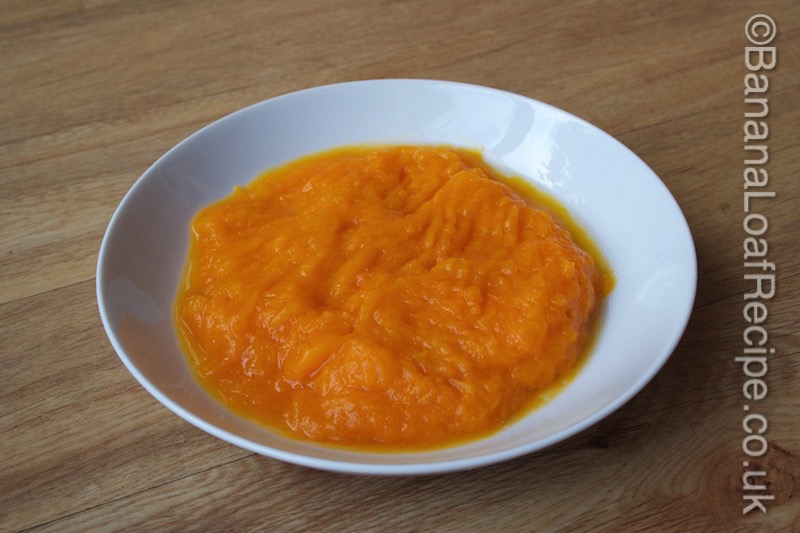
4. In a large bowl, combine the flour, sugar, baking powder and spices and mix well. Put the butter into the bowl and chop it up with a table knife then rub it into the dry ingredients using your finger tips: this is called the rubbing-in method. We have a separate article you can view which is a step-by-step guide to the rubbing-in method. The resulting mixture should look a bit like breadcrumbs.
5. Add the pumpkin puree, mashed banana and beaten eggs to the rubbed-in dry ingredients.

6. Add the raisins and mix together until just combined.
7. Transfer the mixture to your ready-lined loaf tin or tins.
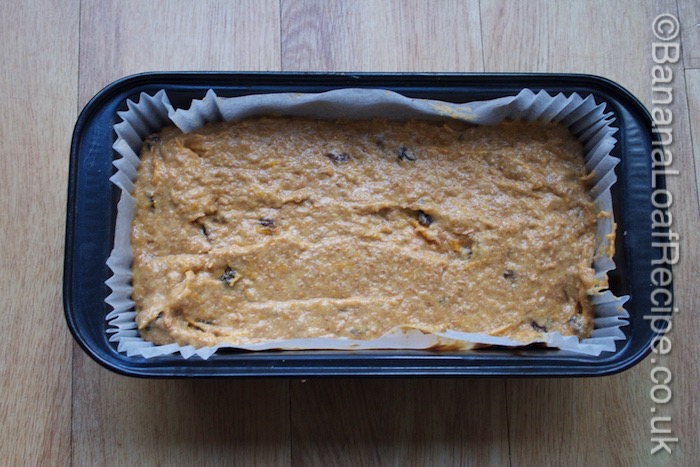
8. A 2lb cake will take approximately 1 hour 10; two 1lb loaves will take slightly less - perhaps 50-55 mins. When a skewer is inserted, it should come out clean. Cracking of the top is normal. Please note that ovens do vary a great deal so we would recommend you read our article How to Know if your Cake is Cooked to help you know when the cake is cooked.
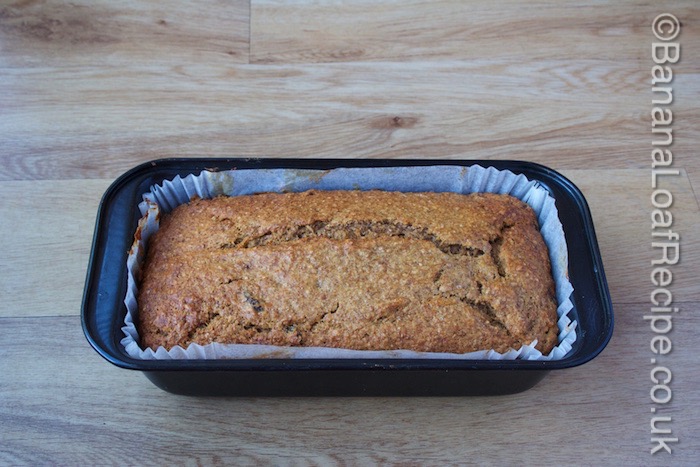
9. When your cake is cooked, take it out from the oven and leave it to cool on a wire cooling rack. Tempting though it may be, don't slice it to early or it will collapse! If you don't have one already, why not read our wire rack review?
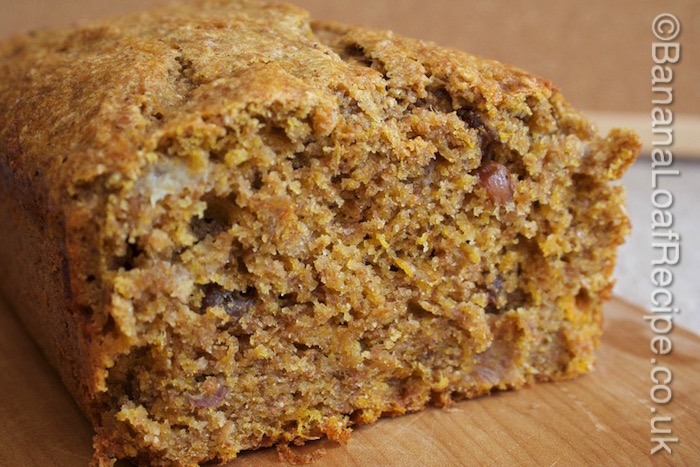
10. This cake stores well in an airtight tin or can be frozen. We recommend Tala Cake tins for attractive practicality.
Home-made Pumpkin Puree
Don't throw away the insides of your Halloween pumpkin! Use it instead to make pumpkin puree for cakes, muffins, meatloaves, soups, sauces and stews!
Gives: Cooked weight is approx half raw weight
Timings
Prep Time:
Cook time:
Total time:
Ingredients
Your leftover pumpkin
Method
1. Scoop the insides from your pumpkin (an ice cream scoop works really well!) and carve your pumpkin. There are lots of guides on the internet such as How to Carve the Perfect Halloween Pumpkin
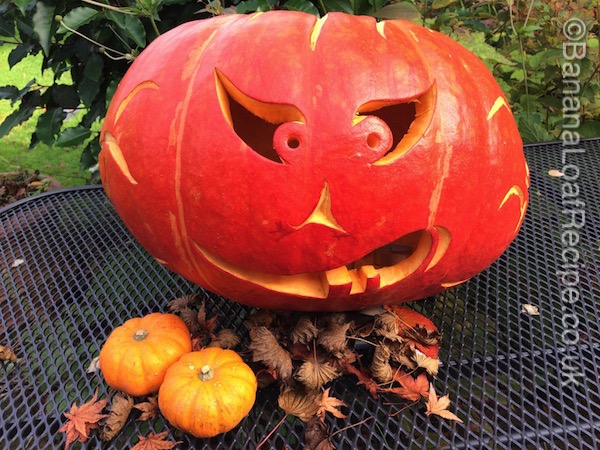
2. Sort out your carving spoils. The only bits you need to put on the compost are any really hard, dry inedible stringy bits among the seeds. The soft stringy bits can all be used in your pumpkin puree. The seeds can be separately washed and roasted - see Jamie Oliver Roast Pumpkin Seeds for inspiration and advice. You should be left with the main pumpkin flesh and the soft stringy bits.
3. Chop up the the pumpkin flesh and the stringy bits - this is now all good for cooking. The smaller it is chopped the quicker it will cook.
4. Simmer your pumpkin in boiling water for 15-30 minutes until very tender.
5. Strain and blend in a blender or with a blender stick.
6. Allow to cool and use in your recipe.
